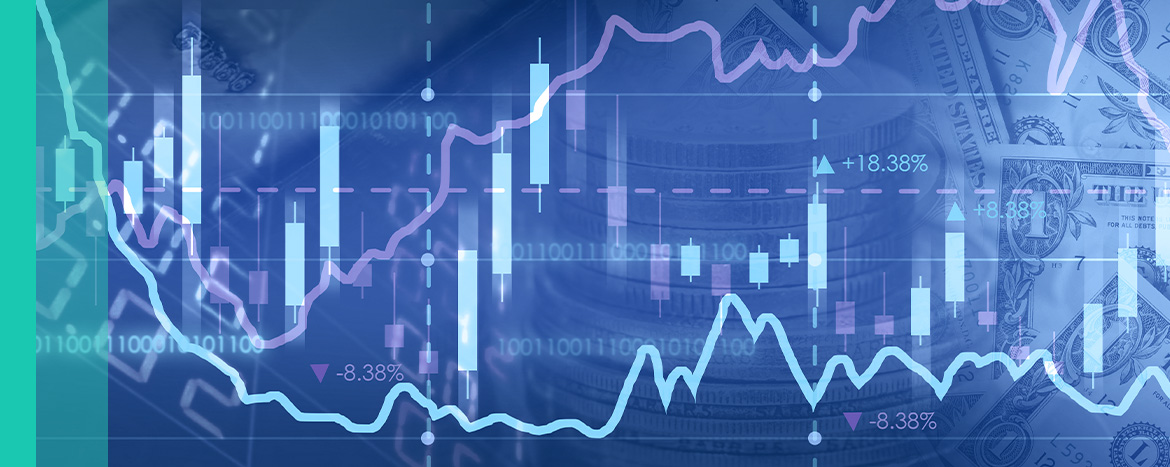
Investment views
Market watch: The disconnect between geopolitical turmoil and market performance
Senior Portfolio Manager Charles de Kock reflects on the implications of escalating geopolitical conflict, ongoing US policy risk, and renewed political tensions in South Africa.
The Quick Take
- Geopolitical risks escalated with conflicts intensifying in Ukraine and the Middle East, yet global markets ended the quarter near record highs
- Uncertainty around US tariffs and rising fiscal strain continue to weigh on investor confidence
- Our portfolios remained anchored in valuation, with high offshore exposure and strong equity selection contributing to returns
Viewed from a geopolitical perspective, the second quarter of 2025 was tumultuous. Tension in two major war zones escalated sharply. In the Russia-Ukraine war, an audacious drone attack on Russian airfields deep inside the country led to retaliatory attacks on Kiev. Peace or ceasefire talks have stalled.
The Mideast conflict escalated into direct military engagement between Israel and Iran, followed by US airstrikes on Iranian nuclear facilities. While oil prices briefly spiked, they quickly settled after a ceasefire was announced by President Trump. How lasting the ceasefire proves to be remains uncertain.
The quarter began with President Trump’s “Liberation Day” announcement of wide-ranging tariffs on nearly all US trade partners. Markets sold off sharply but recovered as the administration softened its stance. At the time of writing, the 90-day suspension of these tariffs is nearing its end, with the final outcome still unclear. Our base case is that the final tariffs will likely be lower than initially announced, with individual country deals expected. Nevertheless, huge uncertainty remains, and it is my view that it will continue to weigh on business and consumer confidence. Global growth expectations have been lowered as a result.
A public spat on social media appeared to mark the end of the relationship between Elon Musk and Donald Trump. Meanwhile, the DOGE (Department of Government Efficiency) initiative to reduce government spending seems to have ended with little success and the budget passed by Congress adds further to the already sizeable US fiscal deficit. Consistent overspending will need to be financed by issuing more government bonds which is likely to lead to higher yields over time. Therefore, in our view, ten-year US Treasury yields remain unattractive.
SOUTH AFRICA: POLITICAL UNCERTAINTY AND POLICY SHIFTS
South Africa faced continued uncertainty during the quarter. The meeting between President Ramaphosa’s delegation and the Trump team in the Oval Office could have gone the way of the Zelenskyy meeting earlier in the year, but ultimately, I believe helped defuse some of the tensions and misunderstandings between the two governments. The fragility of the GNU was tested again when the President fired a DA deputy minister at the end of June. The rand weakened on the news but held up reasonably well, all things considered.
At policy level, the South African Reserve Bank (SARB) appears keen on getting National Treasury to lower the inflation target to 3%, with a 1% band around it. If achieved, sustained lower inflation would be positive for the economy - potentially lowering nominal interest rates and stabilising the currency. However, real interest rates remain very high and are likely to remain so for as long as the SARB believes that inflation expectations have not been adequately addressed. With government debt now estimated at 76% of GDP, growing the economy remains by far the best way to overcome our fiscal challenges. Unfortunately, years of underspending in critical infrastructure have lowered our potential growth rate, making it difficult to see a meaningful increase in economic growth in the absence of meaningful policy reform.
MARKETS HOLD FIRM AMID THE NOISE
Considering the escalation in tension in global conflict zones, as well as the domestic problems between the two largest parties in the GNU, global and domestic financial markets performed remarkably well. The MSCI All Country World Index rose 11.5% in USD for the quarter, while the JSE All Share Index gained 10.2% in ZAR. Many major indices ended the quarter near, or at, all-time highs.
Our investment style continues to be driven by a clear valuation approach, resulting in well-diversified portfolios across asset classes, geographies, and sectors. It is an approach in which we firmly believe. As the past quarter once again demonstrated, attempting to forecast macro events or their impact on markets is an exercise in futility. The unpredictability of macro events and policy decisions under President Trump makes top-down investing even more difficult than usual.
After lagging other precious metals, platinum group metals (PGMs) staged a sharp and very welcome rally. Our multi-asset class portfolios have some exposure to the platinum group metals largely through Northam Platinum, which we added to our funds over the past year. We are, however, mindful that over the longer term, the shift from internal combustion engines to battery electric vehicles will reduce the demand for auto catalysts and, by extension, for these metals. Our analysis suggests that platinum supply constraints will likely result in a period of shortages ahead, but we remain alert and will look to reduce our holdings timeously if valuations no longer justify the exposure.
The higher platinum price is also good for South Africa’s balance of trade and the rand, as it remains one of the country’s biggest exports by value. South Africa’s terms of trade have improved, as the prices of our export basket have recently performed far better than our imports, the largest component of which is oil.
PORTFOLIO POSITIONING
Our multi-asset class funds remain positioned with near-maximum offshore exposure, and within that a high exposure to equities. Our active stock selection contributed positively to performance over the period. We continue to avoid global sovereign bonds, given our concerns about unsustainable government debt levels.
Naspers/Prosus remains the largest single stock in the South African portion of our funds. We believe the market continues to underestimate the potential of its non-Tencent portfolio, which is now generating strong free cash flow. We believe the market will begin to recognise its value over time.
Within South Africa, we favour domestic-facing businesses that can grow earnings even in a weak economy. In our view, a low-growth environment amplifies the divergence between strong and mediocre businesses.
The income-earning portion of the portfolios features a range of government bonds and offshore credit offering attractive yields. We also maintain some exposure to inflation-linked bonds, which provide diversification and a hedge against unexpected inflation.
As always, the future is unpredictable. We remain confident that our long-term, valuation-driven approach will continue to deliver the desired outcome for our clients.
 United States - Institutional
United States - Institutional



